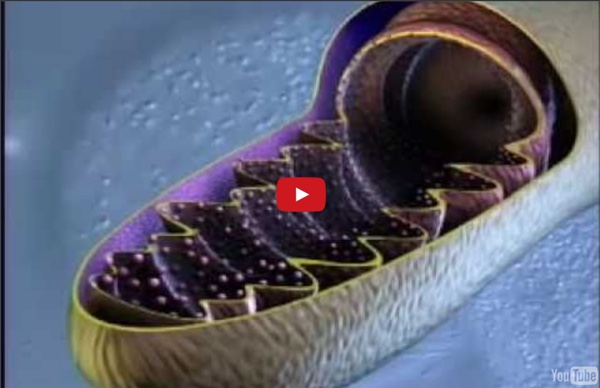



EnergyDrinksLesson.pdf Voyage inside the cell How does caffeine affect the body? Biologist Neal J. Smatresk--Dean of the College of Science at the University of Texas at Arlington--offers this explanation: Caffeine--the drug that gives coffee and cola its kick--has a number of physiological effects. At the cellular level, caffeine blocks the action of a chemical called phosphodiesterase (PDE). Inside cells, PDE normally breaks down the second chemical messenger cyclic adenosine monophosphate (cAMP). Many hormones and neurotransmitters cannot cross the cell membrane, and so they exert their actions indirectly via such second messengers; when they bind to a receptor on the surface of a cell, it initiates a chemical chain reaction called an enzyme cascade that results in the formation of second messenger chemicals. Historically, cAMP was the first second messenger ever described. Thus, when caffeine stops the breakdown of cAMP, its effects are prolonged, and the response throughout the body is effectively amplified.
How do you cite website material that has no author, no year, and no page numbers? Because the material does not include page numbers, you can include any of the following in the text to cite the quotation (from pp. 170–171 of the Publication Manual): A paragraph number, if provided; alternatively, you could count paragraphs down from the beginning of the document. An overarching heading plus a paragraph number within that section. A short title in quotation marks, in cases in which the heading is too unwieldy to cite in full. Because there is no date and no author, your text citation would include the title (or short title) "n.d." for no date, and paragraph number (e.g., "Heuristic," n.d., para. 1). Heuristic. (adapted from the sixth edition of the APA Publication Manual, © 2010) Because the material does not include page numbers, you can include any of the following in the text to cite the quotation (from pp. 170–171 of the Publication Manual): A paragraph number, if provided; alternatively, you could count paragraphs down from the beginning of the document.
Writing in Psychology: Experimental Report Writing Summary: Written for undergraduate students and new graduate students in psychology (experimental), this handout provides information on writing in psychology and on experimental report and experimental article writing. Contributors:Dana Lynn Driscoll, Aleksandra KasztalskaLast Edited: 2013-03-11 09:54:55 Experimental reports (also known as "lab reports") are reports of empirical research conducted by their authors. You should think of an experimental report as a "story" of your research in which you lead your readers through your experiment. These next two sections provide an overview of the experimental report in APA format. General-specific-general format Experimental reports follow a general to specific to general pattern. Title page Experimental reports in APA format have a title page. Please see our sample APA title page. Crafting your story What is the story you would like to tell? During each section of your paper, you should be focusing on your story. Abstract Introduction
The Biology Project How the kidney works Each kidney contains about a million tiny structures called nephrons. A nephron has a cup-shaped Bowman's capsule leading into the renal tubule. The two sections of each nephron extend across the two different regions of the kidney: the Bowman's capsules are found within the outer cortex regionthe renal tubules run from the cortex into the darker medulla How does the kidney balance the blood? Placed end to end, the nephrons of one kidney would stretch about 8 km. A branch of the renal artery supplies the nephrons with blood.
Cell Membrane Structure and Function The Plasma Membrane fluid mosaic model, semi-permeable (selectively permeable), double layer of phospholipids with embedded proteins Jobs of the cell membrane Isolate the cytoplasm from the external environment Regulate the exchange of substances Communicate with other cells Identification Phospholipids (fats) contain a hydrophilic head and a nonpolar hydrophobic tail, which creates a barrier. Cholesterol - stiffens the membrane by connecting phospholipids Glycolipids - signal molecules Glycoproteins - have an attached chain of sugar (antibodies) Proteins embedded in membrane serve different functions 1. Transport Across Membrane -The membrane is selectively permeable (also called semipermeable ) - Small particles, or particles with no charge can pass through the bilayer (carbon dioxide and oxygen) - Water has a charge, does not easily cross the membrane - a channel protein, Aquaporin helps water across Passive Transport Osmosis - diffusion of water Solutions: Hypertonic | Isotonic | Hypotonic
Anatomy and Physiology BIOL132 and BIOL232: Anatomy and Physiology I & IISpringfield Technical Community CollegeSpringfield, Massachusetts Welcome to Anatomy and Physiology on the internet! The pages here are meant to be used as a lecture supplement for anatomy and physiology students. Many students have told me that these pages have been helpful to them, so I encourage you to go through them and learn from them as well. From this home page, you can link to any topic, listed as a Unit page. Please note: I have written these pages as an academic scientist.
Les explications sont bonnes et exactes, par contre la qualité vidéo laisse à désirer. by juliendemers Feb 12